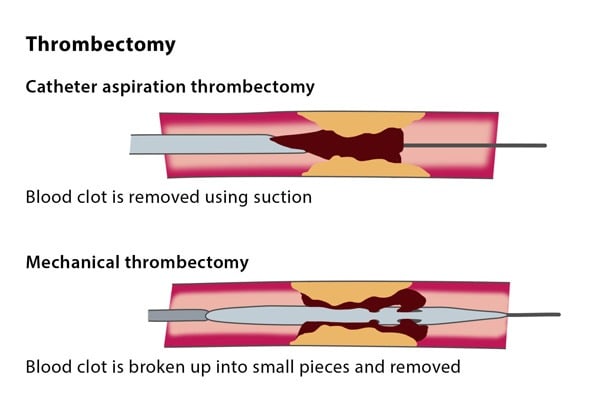Thrombectomy - Clot Removal Procedure
- Home
- Vascular Treatment
- Thrombectomy – Clot Removal Procedure

Thrombectomy is a surgical procedure used to remove a blood clot from a blood vessel. This procedure is often employed in emergencies to restore blood flow and prevent tissue damage or loss.
Understanding Thrombectomy
Thrombectomy involves the physical removal of a blood clot from an artery or vein. This procedure is crucial in conditions where clots obstruct blood flow, such as in cases of Acute Limb Ischaemia, stroke, or deep vein thrombosis (DVT). The goal is to quickly re-establish circulation and minimize damage to the affected area.
Managing Thrombectomy
Thrombectomy is typically performed under local or general anesthesia. The surgeon makes a small incision and uses specialized instruments to extract the clot. Post-procedure, patients may require medications to prevent new clots from forming, along with lifestyle changes like maintaining a healthy diet, exercising regularly, and avoiding smoking.
Vascular Surgeon in Vadodara (Rutvij Shah): For individuals requiring a thrombectomy, consulting a vascular surgeon in Vadodara, such as Dr. Rutvij Shah, is essential. Vascular surgeons are trained to perform this delicate procedure and provide comprehensive care to ensure optimal recovery and prevent recurrence.
In summary, Thrombectomy is a vital procedure to remove blood clots and restore circulation. By seeking the expertise of a vascular surgeon in Vadodara, such as Dr. Rutvij Shah, patients can receive effective treatment and management for conditions requiring clot removal.
-
How common is Thrombectomy?
Thrombectomy is a common procedure for treating conditions like stroke, Acute Limb Ischaemia, and deep vein thrombosis.
-
What are the complications of Thrombectomy?
Complications can include bleeding, infection, damage to the blood vessel, and recurrence of the clot. However, these risks are minimized with proper medical care.
-
What is the most common reason for needing a Thrombectomy?
The most common reasons include ischemic stroke, Acute Limb Ischaemia, and significant deep vein thrombosis.
-
When should I see my healthcare provider?
Seek medical attention if you experience symptoms of a blood clot, such as sudden pain, swelling, or changes in skin color, especially if you have a history of clotting disorders.
-
When should I go to the ER?
Go to the emergency room immediately if you experience severe symptoms like sudden loss of limb function, extreme pain, or significant changes in limb color, indicating a possible clot.
-
What questions should I ask my doctor?
What are the risks and benefits of a Thrombectomy for my condition? How can I prevent future clots after the procedure? What lifestyle changes should I implement to reduce my risk?
